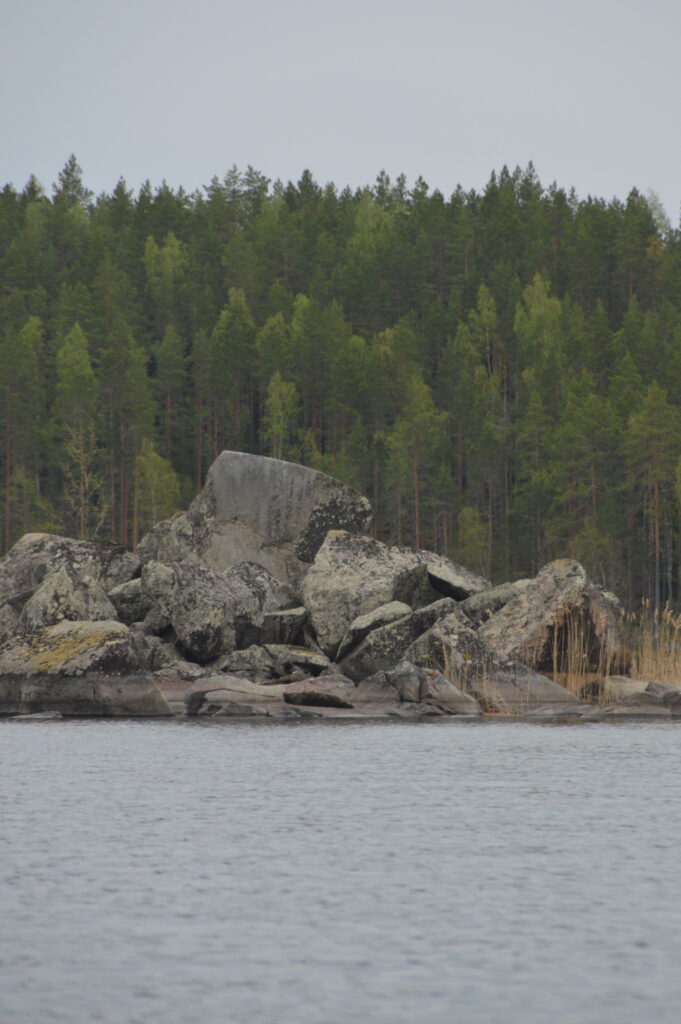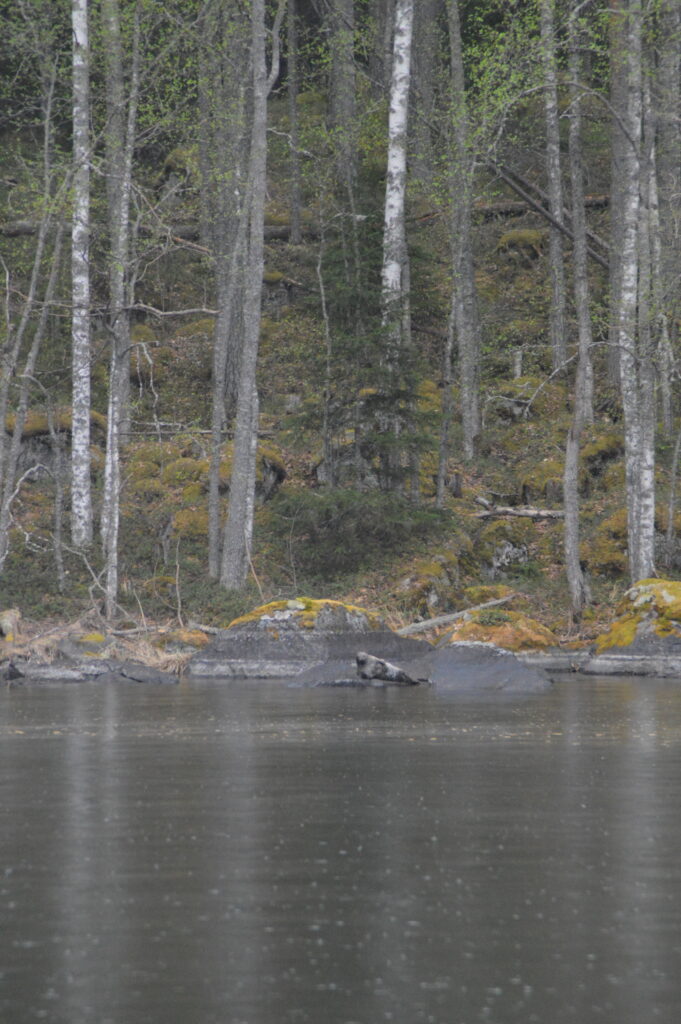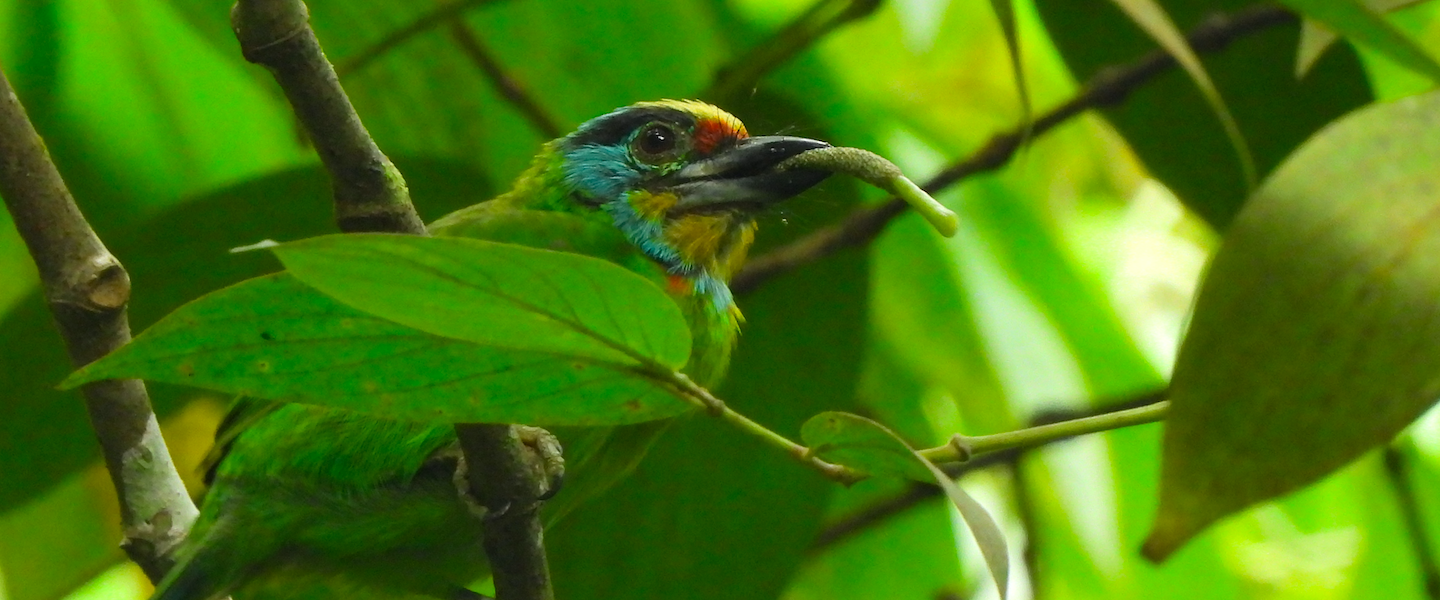Last week I visited the Saimaa lake as part of a course of the University of Helsinki on debates in conservation biology. We studied the conflict between human communities and the only mammal endemic to Finland, the Saimaa ringed seal (Pusa hispida saimensis). This was my first visit to Linnansaari National Park, so I enjoyed the nature in the region only few weeks after the lake melted.

Lake Saimaa is the largest freshwater body in Finland and the fifth largest in Europe. Only four seal taxa are exclusive to freshwater, including the Saimaa ringed seal, endemic to this lake,. A population of ringed seals got stuck in the area around 9500 years ago, and long-term isolation arose evolutive differences. Today, the seal numbers around 425 individuals in the lake. However, only above 100 individuals were alive in the 1980s. Using the seal as the icon of large conservation efforts and implementing Linnansaari and nearby Kolovesi National Park proved successful at increasing population numbers.
Linnansaari National Park was established in 1956, north of Savonlinna. Being the Saimaa ringed seal its icon, it was meant to protect the wildlife of the Finnish lake region, including the osprey (Pandion haliaetus), which breeds in big nests on top of tall trees in the small islands of the park. Our duty here was mainly to interview local people and find out common concerns. Industrial fishermen progressively changed their methods as conservation laws developed towards bans on fishing using certain techniques or during certain months — although recreational fishing is the main regime in the lake. Workers at environmental organizations have observed the seal population increase, as well as ecotourism agencies, now able to spot several seals during the tours they offer. However, there is a common sense of detrimental top-down management, as measures set by organisms based in Helsinki (and also at EU level) rarely count on the opinion or involvement of locals. Although Saimaa seal is known by most of the Finnish population and has always been respected by Saimaa people throughout history and still today, we found big room for improvement to bring awareness of the actual value of the seal and region and the biggest current threats. Due to their life cycle strongly dependent on ice banks, climate change decreasing ice cover in the lake limits the conservation efforts happening at a local level.

Hearing stories from locals about their experiences and thoughts on the seals was a great experience. In the mean time, we stayed in the shore of the lake close to the town of Oravi. We toured the lake and visited Linnansaari island, finding up to four different Saimaa ringed seals, two of them together. They molt in spring after the ice melts and spend more time out of the water than usually. Our guides explained how reliable finding them is, as they learn the rocks they prefer to rest in.
While looking for the seals, we spotted several ospreys, two of them in the nest, as well as common gulls (Larus canus) and common terns (Sterna hirundo). A common sandpiper (Actitis hypoleucos) and some barn swallows (Hirundo rustica) are also seen in the lake. Common forest birds spotted in the island included fieldfare (Turdus pilaris), redwing (Turdus iliacus) and willow warblers (Phylloscopus trochilus).

From our accommodation in the shore of the lake, we enjoyed the wildlife sounds of the sunsets of late spring in Finland. The haunting, primitive calls of Arctic loons (Gavia arctica) fill the buzz of the first mosquitos and a territorial male European woodcock (Scolopax rusticola) made itself noticeable on top of our cabin. A field next to it held a common crane (Grus grus) and several Northern lapwings (Vanellus vanellus). Early in the morning, a local male greater whitethroat (Curruca communis) — my first of the year — and several yellowhammers (Emberiza citrinella) are very vocal in the garden.
All in all, my first time in Linnansaari National Park not only was pleasant, but also taught me a great deal of human-wildlife conflict in current days in Europe. The dates seemed great for seal spotting, although a visit later in the year over the summer must have featured even more the greatness of the biodiversity within the park.




